
by Terri Cook Thursday, May 24, 2018
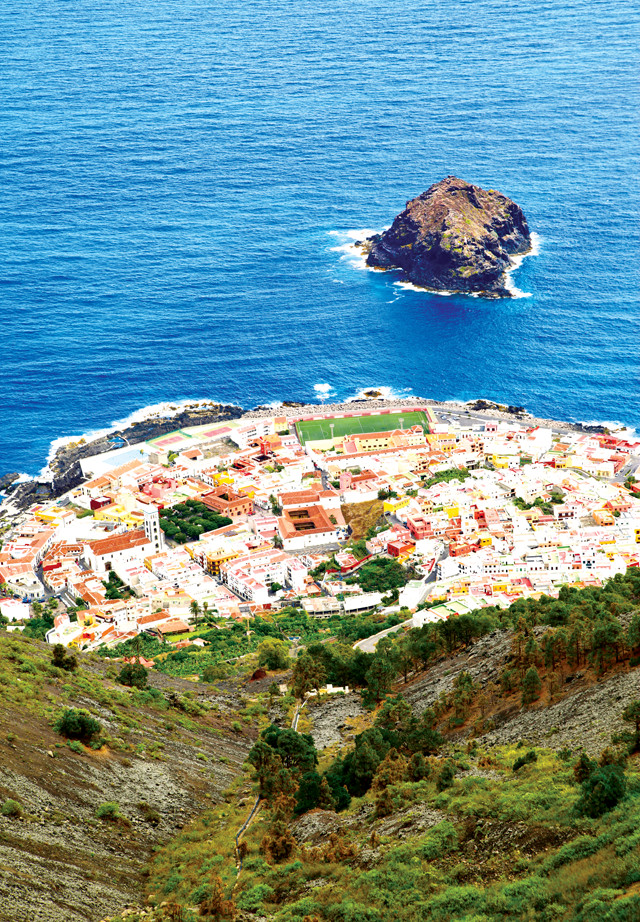
Credit: ©Shutterstock.com/Roman Sigaev
I was standing on top of the world. No matter which direction I looked, steep cinder slopes dropped away sharply, merging with the thick white billows of sea fog below. A chilly wind swirled around me. In the distance, the dark peaks of other great mountains poked above the clouds, and I glimpsed shining patches of deep blue sea.
I was standing atop Pico del Teide in the Canary Islands, the highest point in Spain at 3,718 meters. Just that morning, my family and I had been strolling along lustrous dark sand beaches with the Atlantic’s gentle waves lapping at our feet. This perfect day in paradise made it abundantly clear why the islands are called the “Hawaii of Europe.”
Europe’s Volcanic Playground
Several years ago, my husband and I decided to take a trip to Europe with our two young kids. Because we had more time and sense of adventure than we had money, we diligently searched the Internet for bargains. We found Ryanair, an Irish budget carrier best known for incredibly cheap airfares and controversial cost-saving proposals. My husband spent hours piecing together an itinerary of interesting destinations with airfares of no more than $25. Thus, Tenerife, the largest and most populous of the seven main Canary Islands, became the second stop on our budget tour of Europe.
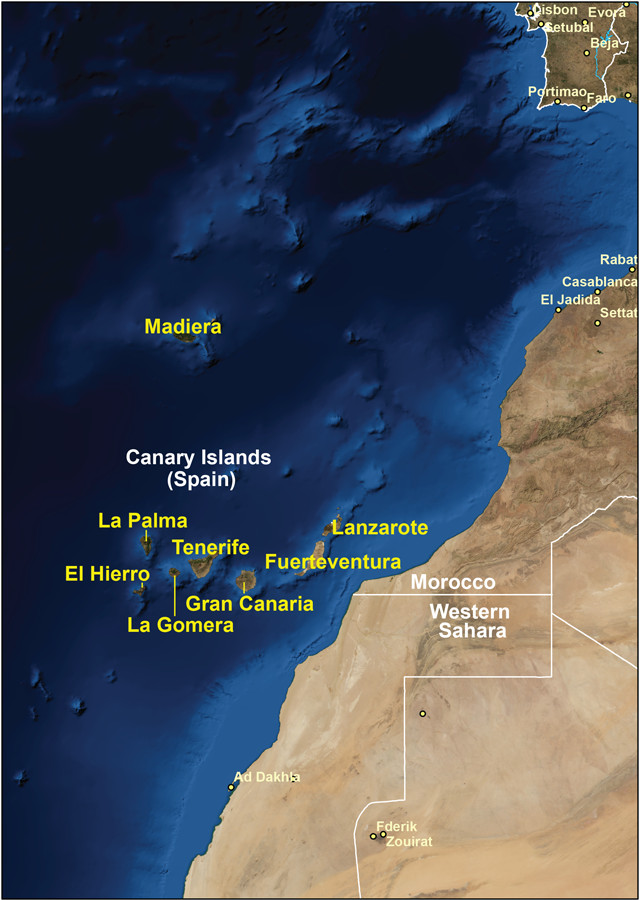
Credit: Kat Cantner, AGI
The gorgeous Canary archipelago lies about 100 kilometers off the coast of southern Morocco and boasts a mild, San Diego-like climate throughout the year. With diverse volcanic landscapes, copious sunshine, attractive beaches, a wealth of water sports and distinctive traditional foods, the islands are a popular destination for Europeans, but relatively unknown to Americans.
Like Hawaii, the Canaries are a group of volcanic isles formed by rising magma that has punched through the overlying oceanic crust. The source of the magma is thought to be a hot spot, a persistent upwelling originating from deep in Earth’s mantle. The African Plate is moving northeastward slowly over this hot spot so the eastern Canary Islands are generally older (about 20 million years old) than the western ones (about 2 million years old). Due to the African Plate’s slow motion, magma can and does rise up periodically throughout the archipelago.
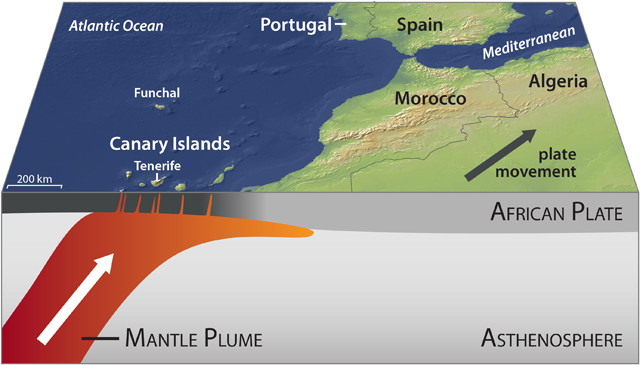
The Canaries formed when magma, rising from a hot spot deep in Earth's mantle, punched through the overlying oceanic crust. Credit: Kat Cantner, AGI
The island of Tenerife is an amalgamation of three large shield volcanoes that coalesced between 12 million and 4 million years ago. It appeared at the zenith of volcanic development compared to the older, eroding eastern islands and the younger, western isles, where the volcanoes are still actively building. This difference accounts for some of Tenerife’s distinctive geological features, including its steep, explosive stratovolcano — the Pico del Teide, the result of a later stage of volcanic construction by more viscous, silica-rich lava — perched atop its base of coalesced shield volcanoes.
Exploring Tenerife’s Diverse Coasts
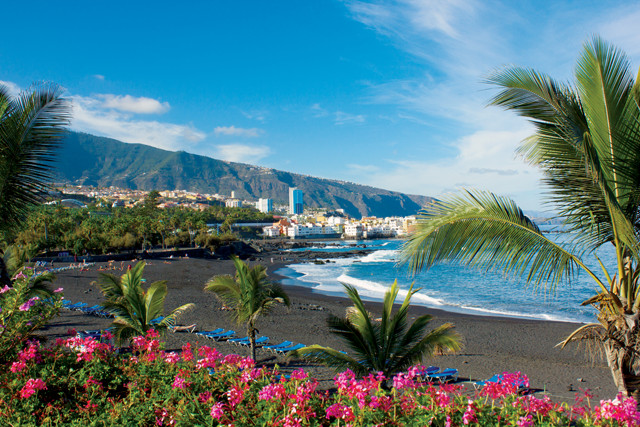
With volcanic black sand beaches like Playa Jardín, the Canaries are often called the "Hawaii of Europe." Credit: ©Shutterstock.com/Neirfy
Visitors will enjoy exploring Tenerife’s fiery history and natural beauty from bottom to top. If, like us, you only have one week there, you should definitely spend a few leisurely days lounging on the beach and enjoying the warm Atlantic water. You can take your pick of dark, volcanic sand in locations like Playa Jardín, or golden white sand that enterprising resort builders imported from the Sahara in spots like the Playa de las Américas.
Popular activities include wind or kite surfing, snorkeling “safaris” — guided snorkeling tours showcasing the area’s highlights — and scuba diving. If you have young kids along or prefer to watch wildlife without getting wet, I recommend a whale-watching trip. The straits between La Gomera (another Canary island) and Tenerife are a great location for spotting these enormous mammals. Resident bottlenose dolphins and short-finned pilot whales can be seen almost every day, and migratory species, including blue and fin whales as well as orcas, frequently visit between the months of December and May and again at the end of the summer.
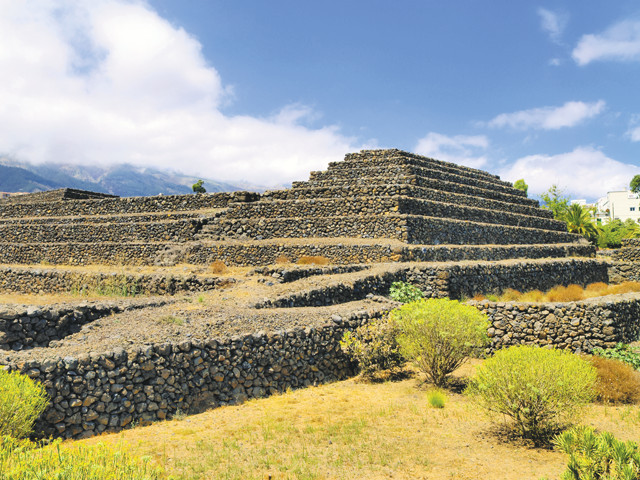
In the mythology of the Guanche, a people of unknown origin who had settled the islands by 200 B.C., the devil lived inside El Teide. These pyramids are thought to have been built by the Guanche. Credit: ©Shutterstock.com/Karol Kozlowski
Tenerife may be the largest of the Canaries, but it’s still not huge: you can drive completely around it in half a day. But it’s best to take a little more time. In a day or two, you can explore the east coast’s arid landscape and colorful villages and the lush green terraced hillsides in the west. On the north coast, of particular interest is Garachico, a small, traditional Canarian town with cobblestone streets that lead to a wonderful central plaza, the hub of local activity. Don’t miss the opportunity to feast on fresh seafood and sip local wine in one of the local cafés draped in bougainvillea. Swim through volcanic coves lining Garachico’s rocky coastline, and hike trails just outside of town that follow the path of a 1706 lava flow that destroyed Garachico’s port and inundated half the town.
El Teide: Tenerife’s Volcanic Heart
You’ll also want to spend a day or two exploring the island’s volcanic heart, the Parque Nacional del Teide, a UNESCO World Heritage Site. The area was declared a national park in 1954 to protect the stunning landscape, fauna, flora and myriad archaeological sites left by the islands’ indigenous Guanche tribes, people of unknown origin who had settled the islands by 200 B.C.
According to the Guanche tradition, the devil lived inside El Teide. One day, jealous of the light from the sun, he stole the orb and hid it underground, causing darkness and destruction across the island. The Guanche appealed to their supreme god, who battled the devil inside the volcano, eventually triumphing and restoring the sun to its place in the sky. This myth may have helped natives to make sense of a prehistoric eruption during which an ash cloud obscured the sun and the volcano rumbled as if a battle were taking place within. El Teide’s most recent eruption occurred in 1909.
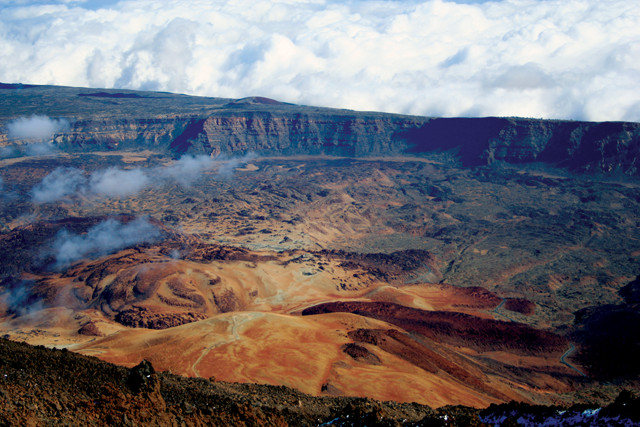
The most recent eruption at Pico del Tiede occured in 1909. Credit: ©Shutterstock.com/Natalia Belotelova
Hikes in the park vary from a flat, sunny 16-kilometer-long trail between the two visitor centers to a 16-kilometer-long, 1,400-meter vertical slog up the steep slopes of El Teide. Visitors can also take the short but pricey cable car ride up and hike the final 200 meters to the summit to enjoy the outstanding view. Either way — whether you hike or ride — you need to get a permit from the visitor center at the bottom of the mountain before ascending to the summit.
Many species of flora and fauna — including the birds named for the archipelago — are endemic to the Canaries. Darwin’s theory of evolution made the Galápagos famous for their endemism, but lesser known is that in 1832, at the start of his five-year voyage on the HMS Beagle, a seasick Darwin planned to make Tenerife his first port of call. Just as the crew was preparing to land, local officials told them they’d first have to spend 12 days in quarantine out of fear they carried cholera. After the captain decided to forgo the Canaries, Darwin wrote, “We have left perhaps one of the most interesting places in the world.” Another famous explorer who visited this archipelago was Christopher Columbus, who at the start of his first voyage in 1492 spent a month on La Gomera stocking up on local goat cheese and other supplies — and purportedly having an affair — before catching the brisk trade winds to the New World.
Above the Clouds
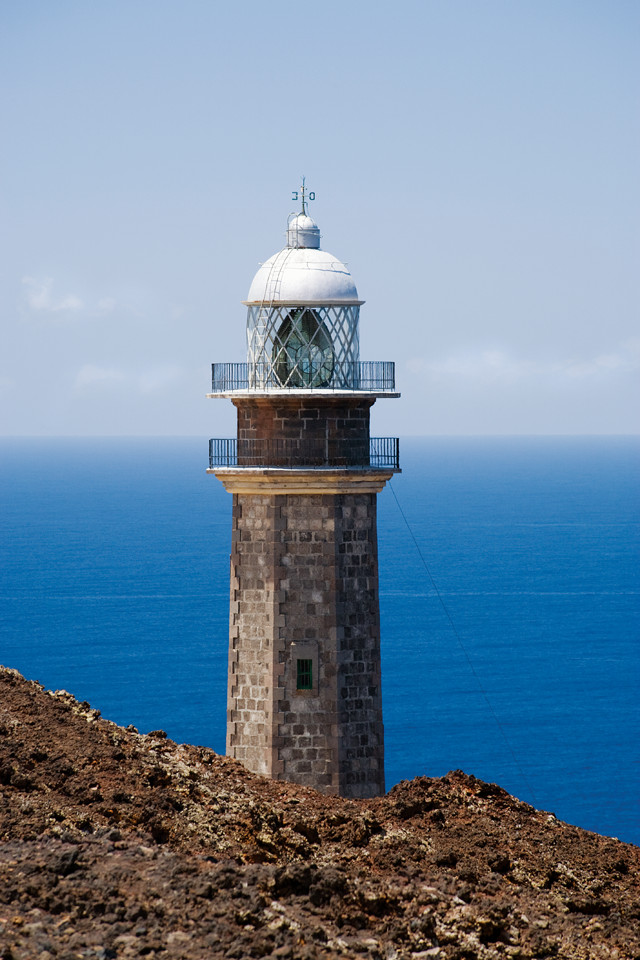
A lighthouse on the island of El Hierro in the Canaries. Credit: ©Shutterstock.com/Oliver Hoffmann
On his voyages, Christopher Columbus attempted to navigate by the stars. Today, thanks to the high elevation and dry air, Tenerife and neighboring La Palma are some of the best places in the world to gaze at the stars, and astronomers from all over the planet come to work in the islands’ world-class observatories. If you’d like to see one of these facilities for yourself, the Teide Astronomical Observatory offers group tours by appointment on Friday mornings from April through December.
Beyond Tenerife
In addition to Tenerife, you may wish to explore some of the other Canary Islands. One suggestion is El Hierro, which was the “end of the known world” until Columbus sailed past it in 1492. With its rural character, El Hierro can still feel that way today. Its unique landscape comprises a UNESCO biosphere reserve, and the island offers great hiking and a peaceful respite, as well as evidence of massive, geologically recent tsunami-generating landslides (see sidebar).
Whether you are on a luxury cruise or your own Ryanair tour of Europe, the Canary Islands, with their diverse mixture of volcanic terrains, outdoor attractions and fascinating history, are sure to be a highlight.
© 2008-2021. All rights reserved. Any copying, redistribution or retransmission of any of the contents of this service without the expressed written permission of the American Geosciences Institute is expressly prohibited. Click here for all copyright requests.